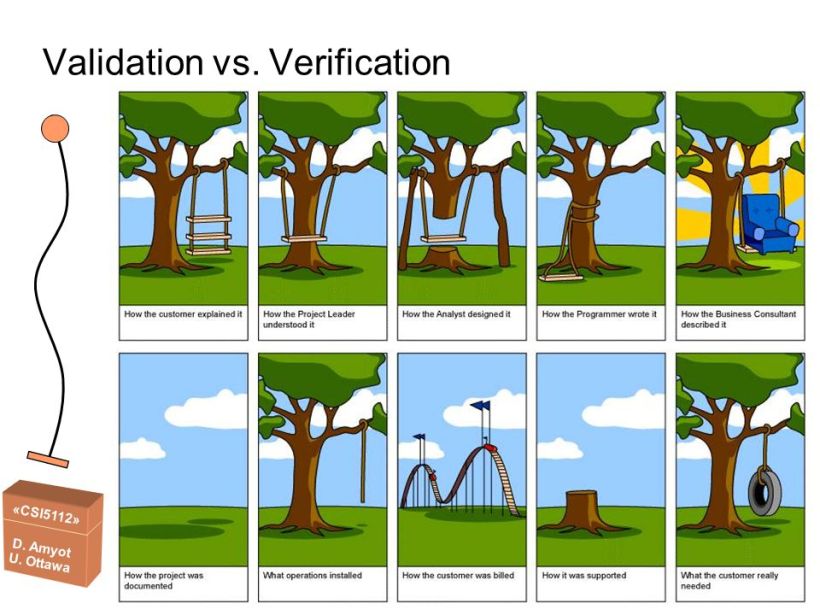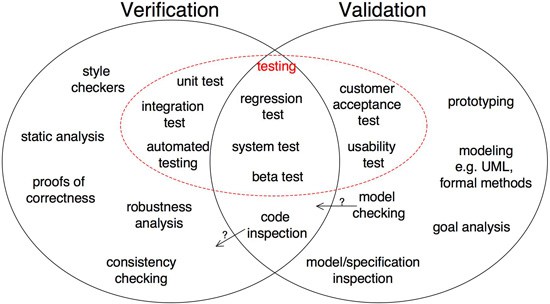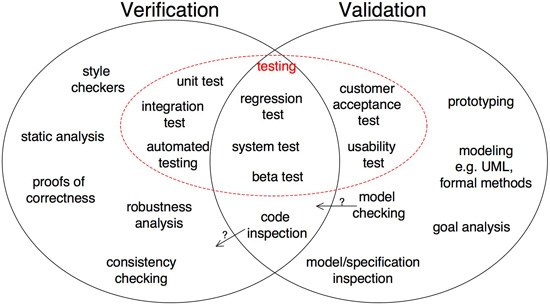Verification and Validation are important during the Software Lifecycle because they help us to find and correct errors as soon as possible, thus preventing the delivery of a faulty product to a costumer. Is it a good product or not?
There are two aspects of V&V tasks:
- Confirms to requirements
- Fit for use
It’s important to outline the difference between these two terms:
- Verification:
- Process to evaluate the mediator products to check wheter the products satisfy the conditions imposed during the beginning of the phase.
- “Are we building the product right?”
- It uses static testing.
- A verifier stablishes that the product implements all the requirements documented in the SRS.
- Validation:
- Process of evaluating the final product to check if it meets the business needs.
- “Are we building the right product?”
- It uses dynamic testing.
- The validator establishes that the SRS is a true reflection of the user’s needs.
Source:
- http://www.softwaretestinghelp.com/what-is-verification-and-validation/
- http://www.chambers.com.au/glossary/verification_validation.php






